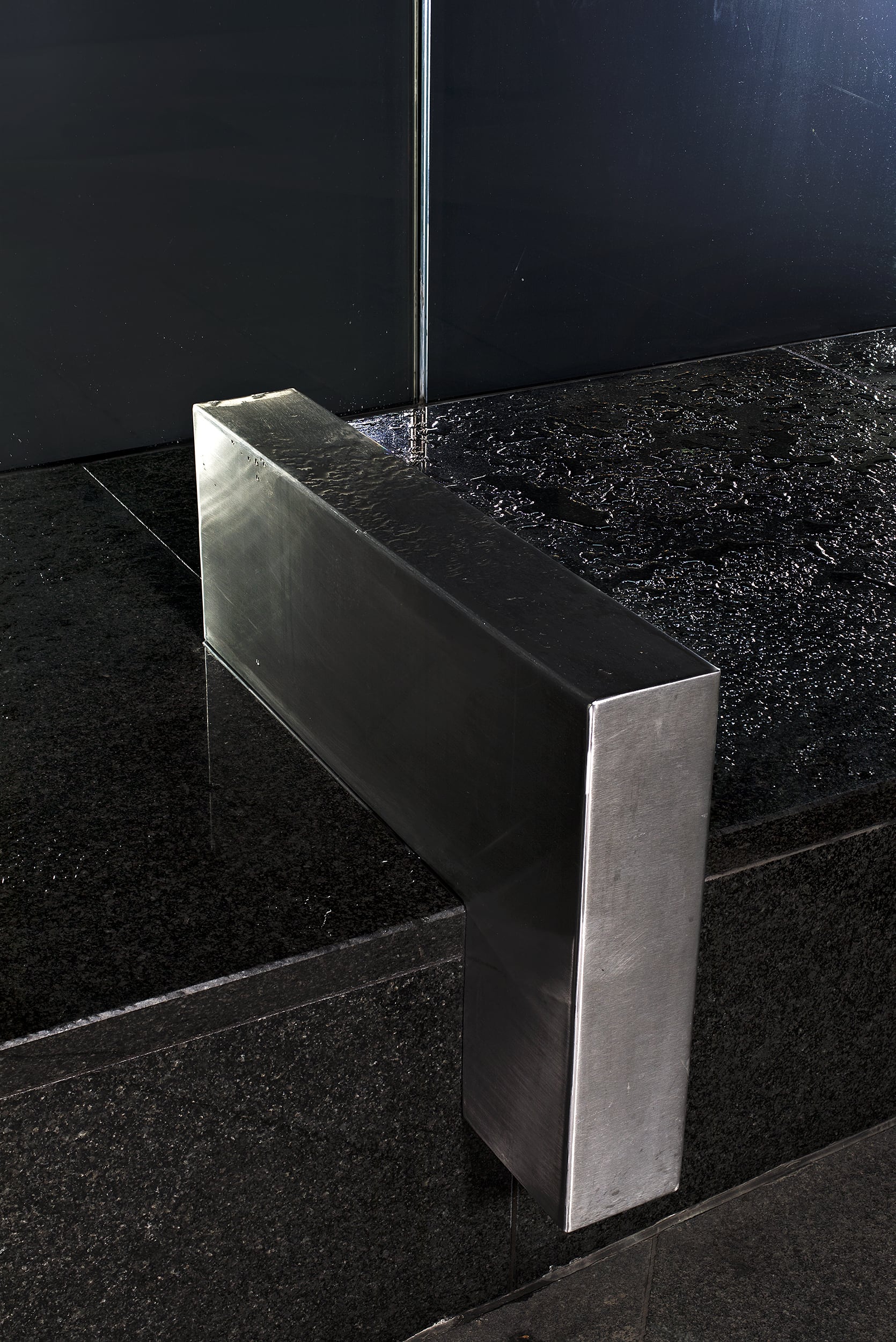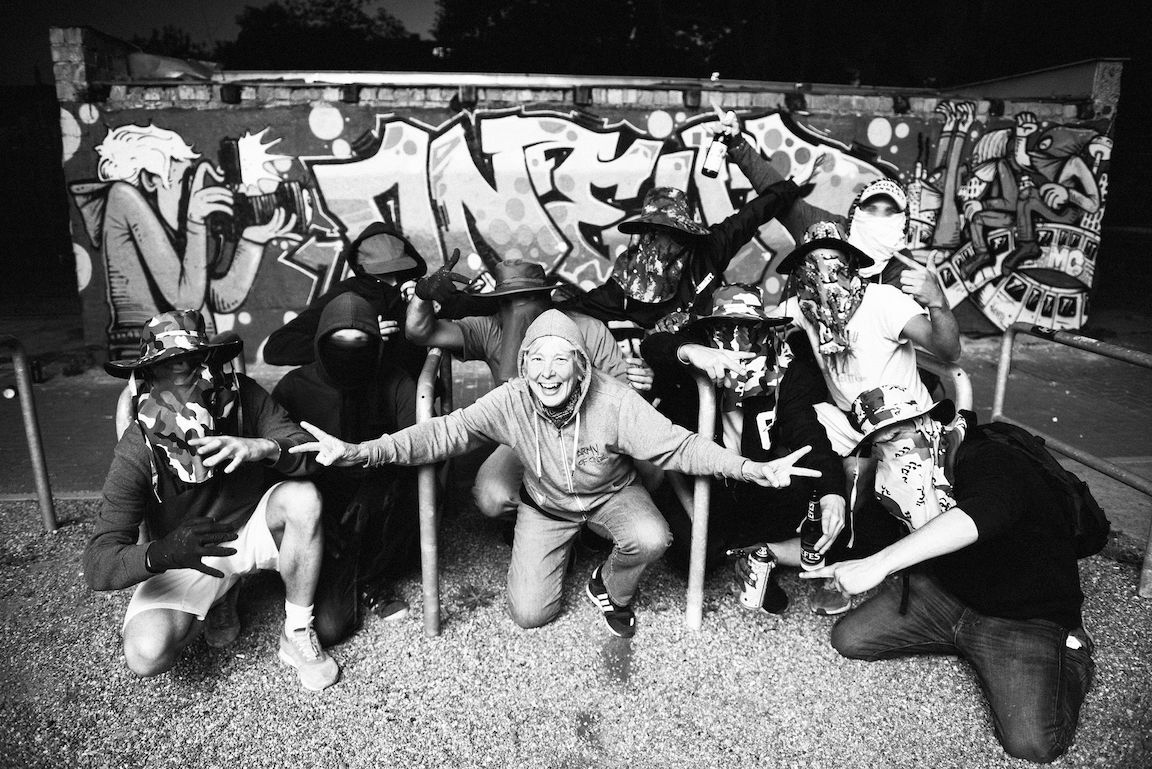FRIDA ESCOBEDO: The Era of the Starchitect Is Over
|Suleman Anaya
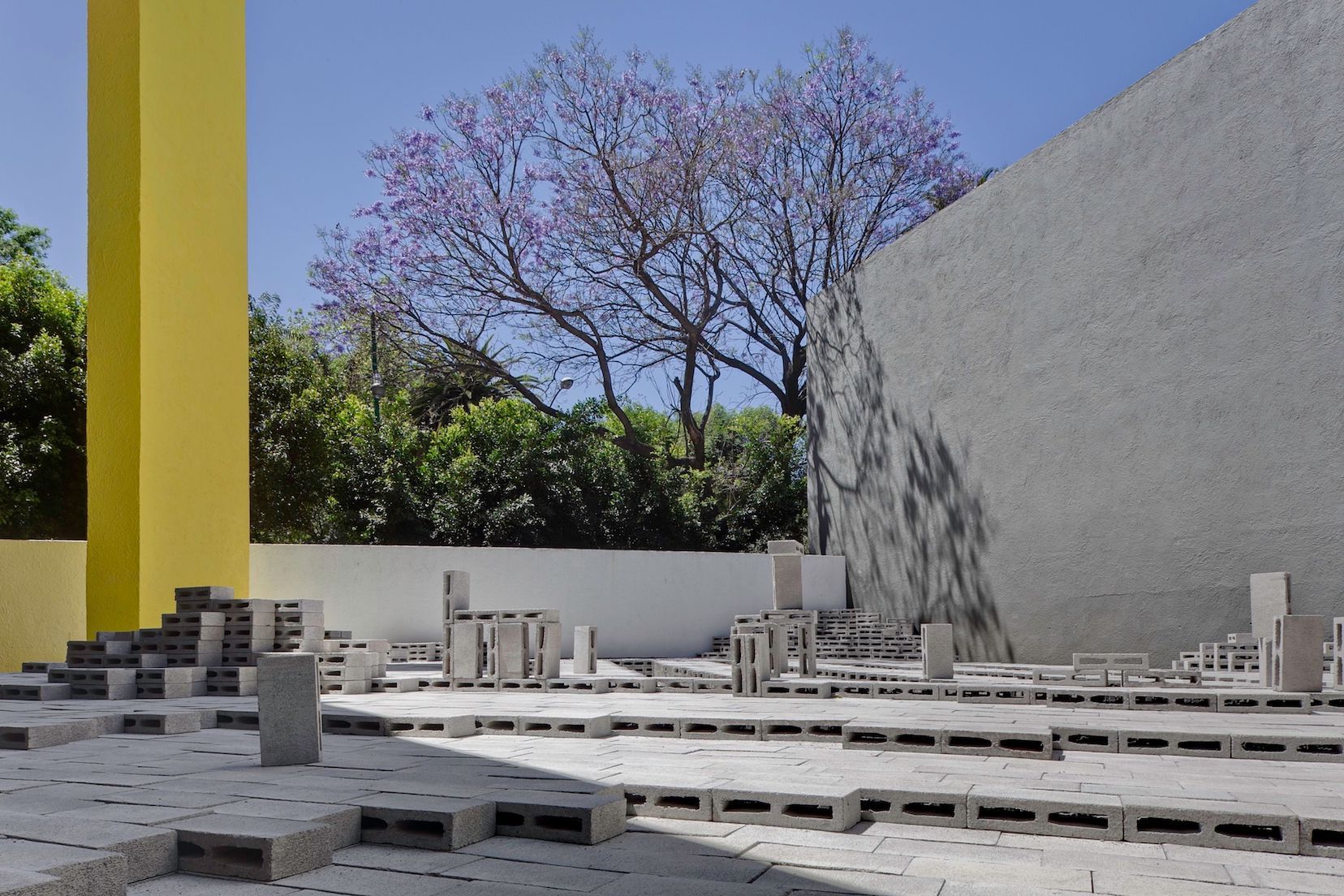
Not long ago, a couple of trucks carrying several tons worth of pure, flesh- and auburn-hued Mexican dirt crossed the US’s southern border. The peculiar cargo was en route to New York City, where it would soon cover the floors and form the inside walls of a vacant commercial space in the historic residential enclave of Park Slope. Neither a prank nor an illegal operation, the shipment was in fact part of an ostensibly benign and ultimately apolitical endeavor: the arrival of luxury Australian skin care brand Aesop into Brooklyn’s most bourgeois hood.
The new shop’s interior is an exercise in hyper-articulate subtlety, featuring a rhythmically staggered wall “woven” out of over a thousand bricks made by hand from red rammed Oaxacan earth, the same material used to craft the tiles covering the entire space’s unvarnished soft-pink floor. No pigment was applied: the visible variations in tone that confer a rich warmth to the room stem solely from using soil from different Mexican regions.
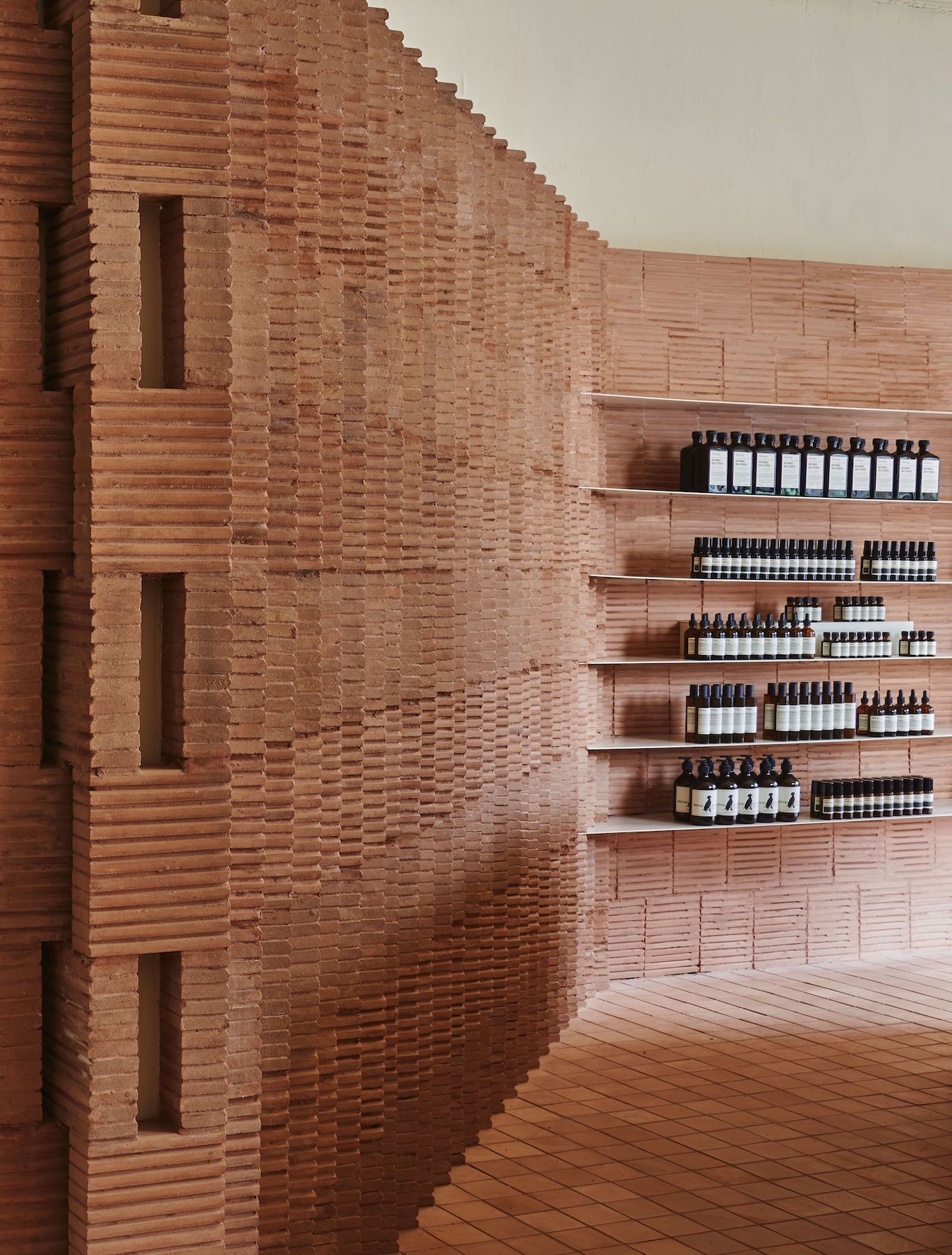
The project’s complex material and conceptual underpinnings emerged from the mind of rising Mexican architect Frida Escobedo, whom the Melbourne-based company enlisted to re-conceive the space for its latest store. Relentlessly inquisitive, the 40-year-old has eschewed stylistic constants in favor of an overriding preoccupation with shifting dynamics, the act of looking (in as well as out), and making a lot with little by creating diversity from constraints. Her cerebral approach is evident in textured projects ranging from a modernist hotel restoration in Acapulco and a house modeled after a camera, to lattice-walled housing for Stanford business students and – most prominently – last year’s outdoor commission for London’s Serpentine Gallery, where she quietly fulfilled Cedric Price’s dictum that the ideal pavilion should distort space and time.
I sat down with Escobedo to talk about memory, modesty, the multi-layered megalopolis she calls home, and how she intends to defeat the lion of ego-driven, size-obsessed, contemporary architecture without forsaking an ounce of her preternatural, soft-spoken poise.
At the opening event for the new Aesop store in Brooklyn you said working on a retail project allowed you to ask questions you wouldn’t normally consider. What was the research process for this particular project?
That is how I approach every project and the main reason why I accept commissions. The test is always, “can we ask a question with this?” If the answer is no, we will probably pass. I see doing architecture as a way of understanding the world. So if it’s not explaining something to me then there’s no real point.
One of the main themes in designing a store for this brand in Park Slope – considering we were creating a permanent space in a context with a rich specific history – was layering. Coming from Mexico City this is essentially embedded in my DNA: working with a pre-existence and then adding a layer that is new but at the same time informed by the past condition. Here it meant looking at the importance of brick in this particular Brooklyn neighborhood, an industrial material that at the same time was handcrafted. So even though there was a modularity to it, which changed how buildings were produced, local [19th-century] architects flirted with the idea of manipulating the brick to use it as ornamentation on facades. I wanted to do something similar with one pivotal twist: instead of brick, we used hand-made elements brought in from Mexico.
There is a modesty to your work. Or more precisely, a refusal to be splashy, all while embracing complexity. How deliberate is that and what motivates it?
To me that’s very important. I think when people try hard to speak loudly, they fall into repetition. Making a big statement requires a lot of consistency, which can easily become a formula. But if you’re doing things quietly you get to observe, which to me is what it’s about, and how you gain a real understanding of the circumstances. That’s why I like my job. I want to learn from the context. I don’t do my job because I want to say something. It’s more about listening.
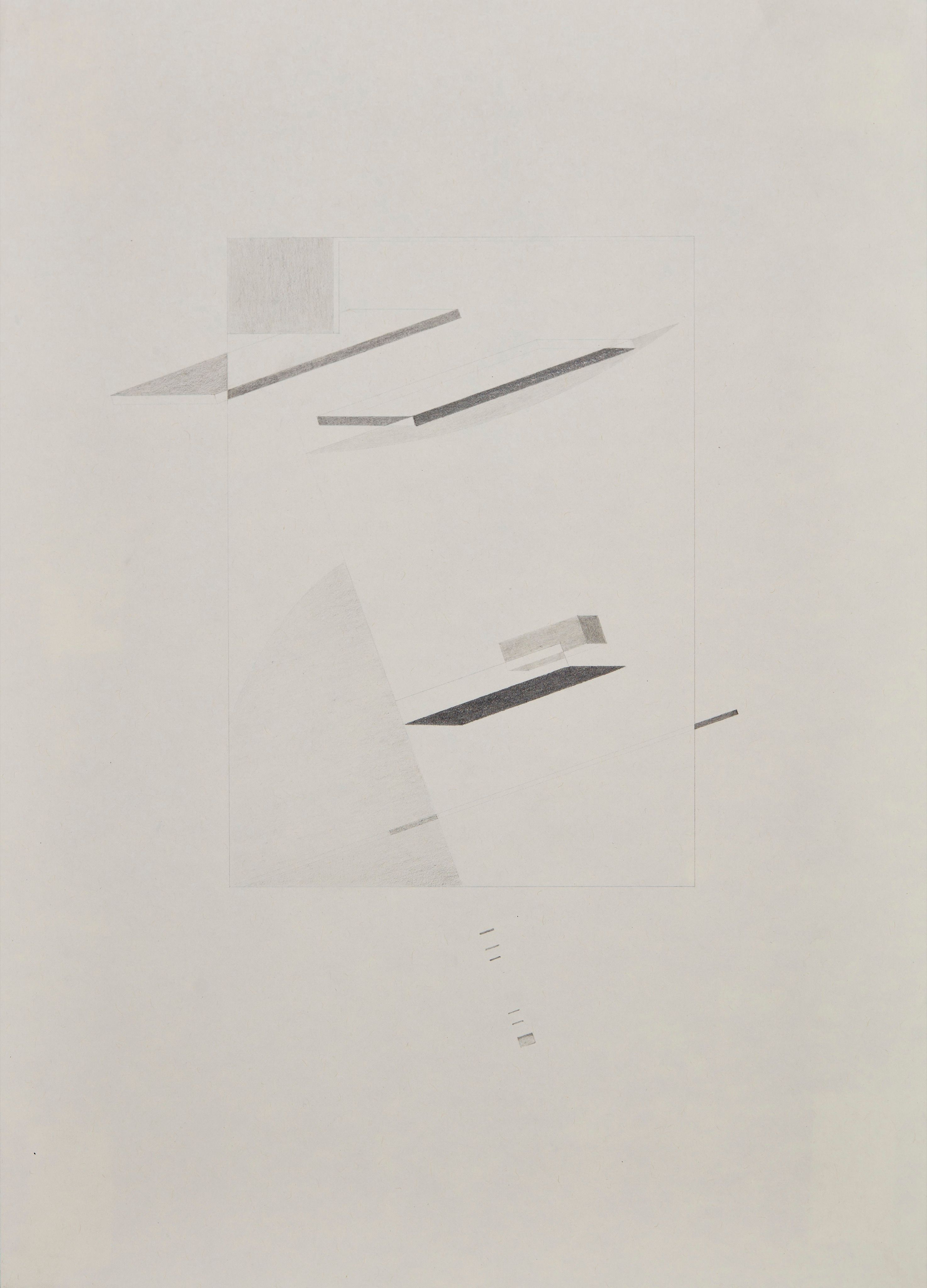
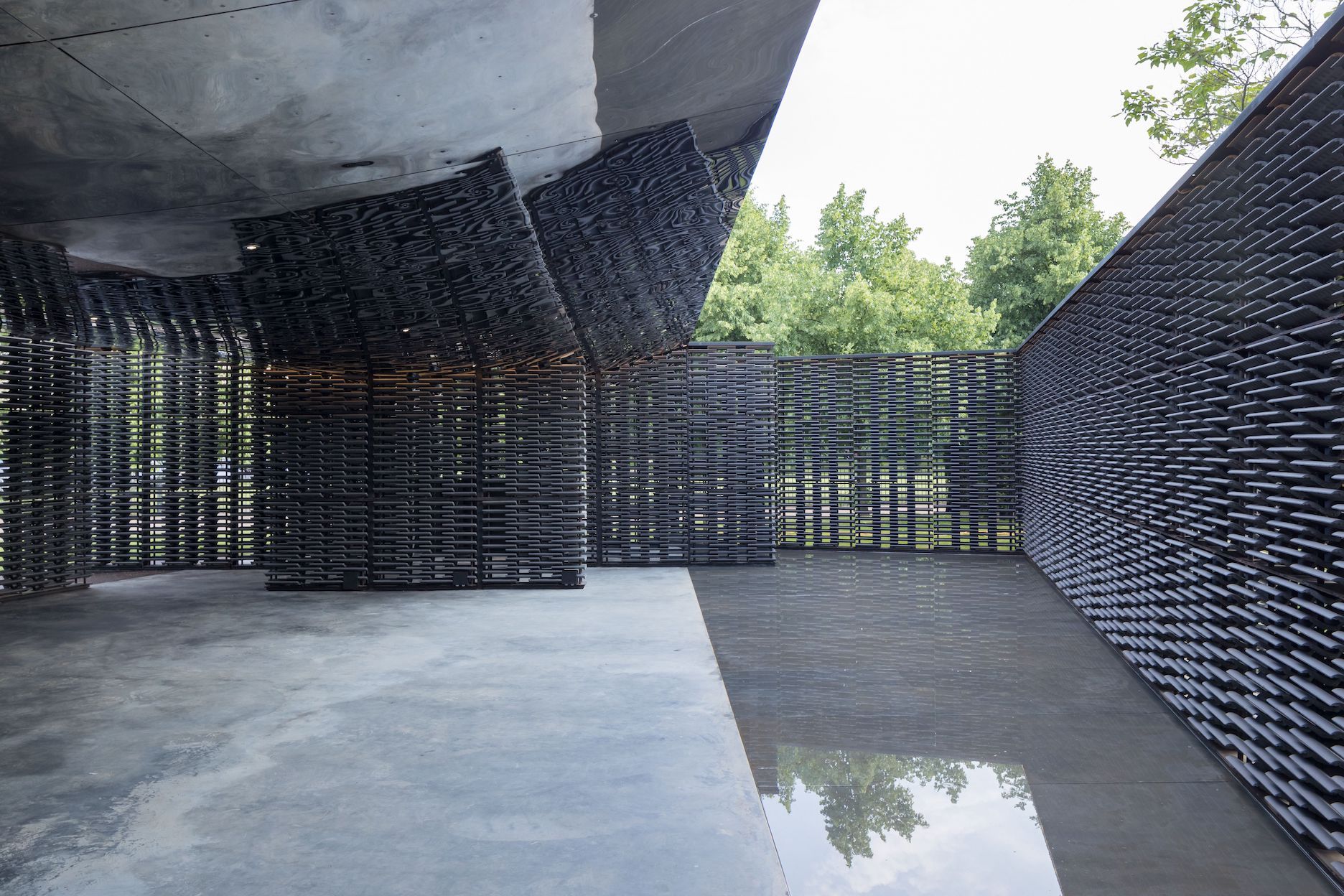
It seems like your personal curiosity is the driving force behind your practice, which makes you an outlier in a profession dominated by extroverted personalities keen on making bold assertions and masterfully crafting their legend. That’s the archetype from Le Corbusier to Koolhaas, but it even applied to someone like Zaha Hadid or your countryman Luis Barragan. Are you an exception or the new normal?
I think it really is a generational shift. The idea of the starchitect making grand gestures with huge commissions is over. People realized very few architects can actually work like that, and that it can’t really be the goal, because if it is, who and what are we really working for? There’s nothing wrong with working for your personal satisfaction, but then at least ask some interesting questions so it’s not just about displaying yourself but about growth.
You can only grow if you’re constantly questioning yourself. I think my generation marks a change in that few of us are interested in creating a signature, super-recognizable architecture and stamping it onto as many projects as possible. If we have something in common I think it’s an interest in asking critical questions and the idea that design comes in many different forms.
There are many ways to talk about space, all of which qualify as architecture to me. For instance, I am fascinated with how architecture creates specific social dynamics, which is very evident in how certain Mexican homes create divisions and hierarchies between the “master” family and their domestic workers. We as architects like to pretend we have no responsibility in that – that these are just commissions that fall on our lap. But in truth, we are active participants in either perpetuating those dynamics or questioning them.
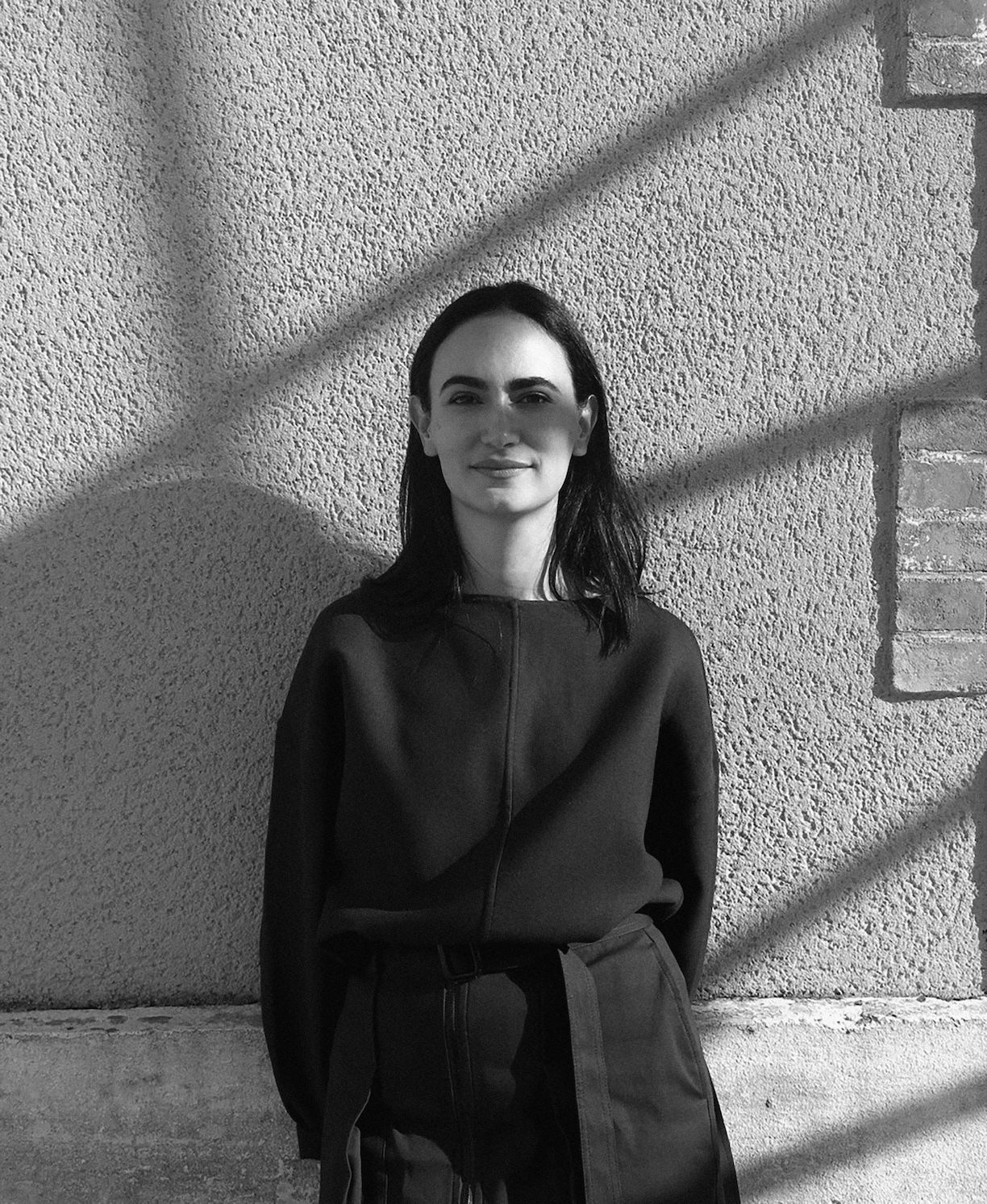
Walls, solid or porous, are a theme in your work in their double role of enclosing and framing space. Surely you are aware that the word “wall” is currently somewhat fraught. As a Mexican designing in an American city, how did this factor into your latest NY project?
I certainly wasn’t making a statement by building a wall in a store in Brooklyn. It wouldn’t be the right venue for that. The walls in my work have more to do with my interest in simplicity: how a modular thing can create tremendous aesthetic complexity. We’ve been developing this idea with celosias (typically Mexican breeze walls) as well as with closed walls. It happens at Aesop in Park Slope where what you’re looking at is essentially earth – dirt – but it’s presented in a way that engages you. As you walk through the space you register subtle design gestures: a small change in texture, or how the light comes in and hits the wall. And so as the eye travels, a strong, intricate memory is created, done by very simple means.
Simplicity is really complex to achieve. Whenever you see a single idea that is effective, it usually encompasses a whole universe. That to me is a successful project, when you achieve one simple gesture that speaks about many things.
You’ve said that with every project you try to engage the political or social context. Is it possible to do that in a commercial situation like a store for a luxury skincare brand?
Probably not the political – but we are very interested in the kind of overlap that happens when, for instance, you bring in something manufactured in Mexico and make it the most evident feature of a project [in the U.S.]. If you think about it, the [new Aesop] store is composed of soil that came from somewhere else. We are literally on new territory, a territorialized piece of land. In a completely different situation, for a retail project in Chicago, in a part of town that was changing so quickly there was nothing to grasp onto, we incorporated informal construction elements that spoke precisely to the moment of transition that the neighborhood was undergoing. So in one way or another, context and social dynamics are always present in the design.
In Park Slope, we also looked a lot at facades, which are fascinating to me. The way in which people use them to represent themselves and create a public persona, as a boundary between “you” and “the other.” Are you trying to blend in or stand out? Are you being yourself by being similar? I’m always thinking about this. I think it’s a very Mexican trait, this split between what you present to the outside and what’s really going on. It’s like Greek theater: you put on a mask but you’re still yourself behind it, so part of you filters through. The challenge is to decode these ambiguous signals.
Tell me about Erika Naginski’s class on “The Ruin Aesthetic” at Harvard. You’ve said it changed the way you look at life and your work.
It was about understanding history through fragments, and how we never observe, grasp or compose things as a finished whole. That was crucial to help me realize that architecture will always be an unfinished thing. You start out with a drawing that’s a projection of what the future might be – but it’s incomplete. By the time you build it, it’s a ruin of the original idea, and once it’s inhabited, it’s lost its pristine condition, then when it stops being occupied other forces take over and continue to change it. The idea that buildings are not static but always moving, shifting and changing, was very liberating. It meant I didn’t have to design a perfect building. It stops being about the utopian realization of a model the architect has in his or her head. In reality, everything is made up of fragments. That’s also how we read buildings: a detail here, a corner there, never as a whole single object. And that’s how memory works too. We understand space and time through snapshots rather than as one continuous entity. Every time we remember something it becomes different.
In Mexico City, literally a city built on top of another one, it’s not crazy to say you live among the ghosts of buildings. We’ve internalized it into our subconscious, those former cities live on in our imagination and it’s very powerful. Also because it represents resistance and resilience, a culture that could not be defeated and instead had to be absorbed, incorporated, metabolized, and ultimately transformed into something else.
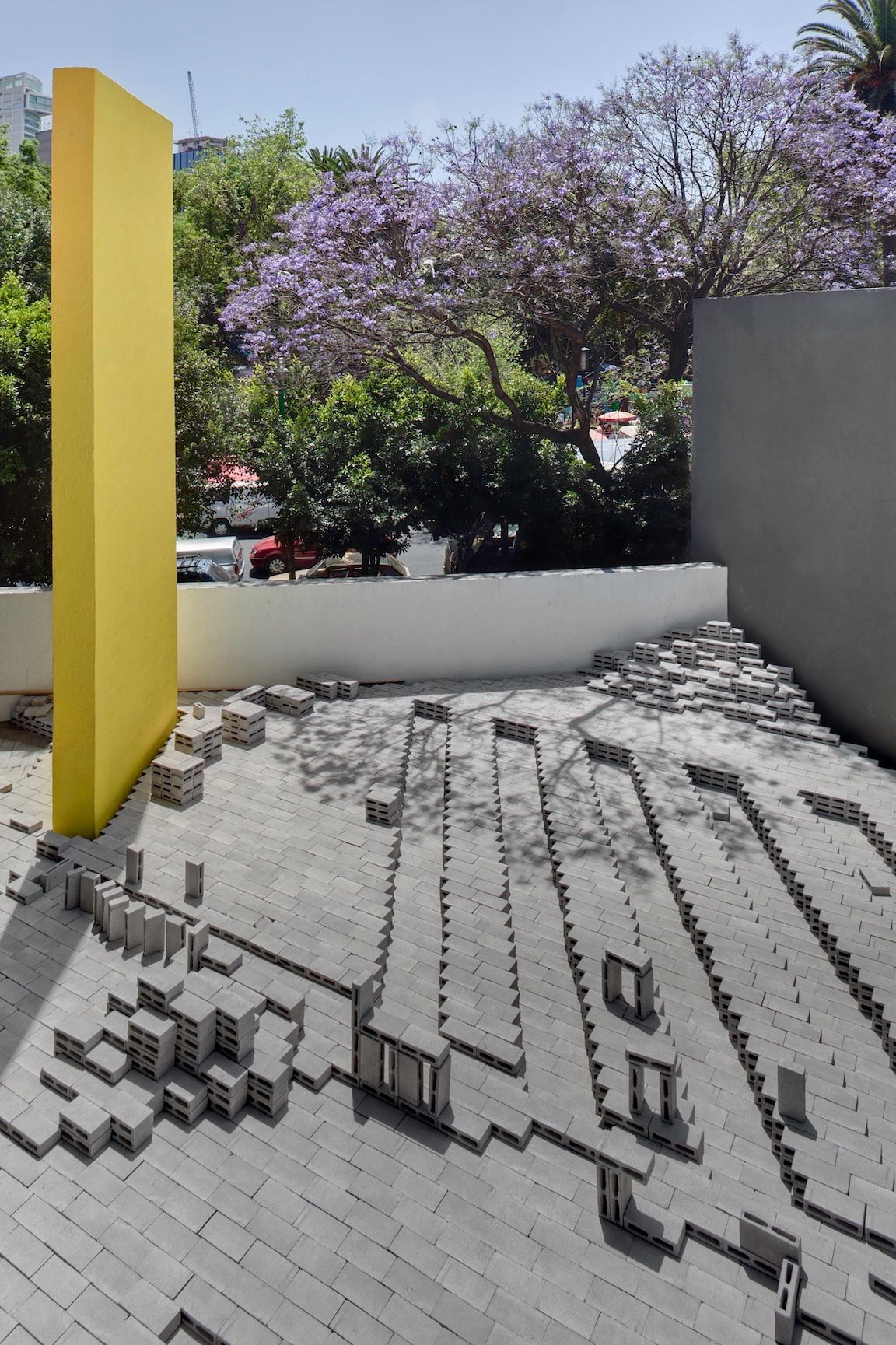
Why was your intervention at Museo el Eco, designed by German-born artist Mathias Goeritz, so career-defining for you? It’s essentially a built manifesto, and one of Mexico City’s many lesser-known but great 20th-century spaces.
That competition was the first time I worked on a public space, which gave me the opportunity to do something that would engage with the public without being loud, because that courtyard is already quite loud, in the best possible way. There was no point in trying to compete with that. Another important thing about our work at El Eco is that by using standard cinder blocks, we appropriated a material that is ubiquitous in self-made construction throughout the city. It was the first time I drew a parallel between architecture and language, because in a way what we were doing was like translating or learning an accent. That was a revelation. Not only is everything unfinished, it’s also a living thing, like language, which you’re always adapting, to express your own voice and communicate with others.
You tend to think of architecture as a strategy. Does an architect retain any measure of authority if she is seen as a researcher, planner or resource manager? Does it matter?
I am glad this idea of the architect as the creator of pristine precious objects is fading away. Architecture is equally defined by factors such as policy-making, economy, real estate, and speculation, all of which shape our spaces. As architects we have limited agency on how to shift those things. But if we are asking the right questions, I believe we can have a bigger impact.
But it’s not easy to get people to think this way. I also teach and sometimes face the challenge of convincing my students to stay curious, explaining that sometimes by not doing anything, but questioning what is, you are doing more than you would with a facade or a finish or material.
Is there a contradiction between being a critically engaged architect and taking on unabashedly commercial commissions like the Aesop stores [Escobedo has been involved in seven locations for the brand]? Or is the perceived conflict an outdated notion?
If you don’t expose yourself to everything, including every type of project, then how can you understand everything? If retail affords you the chance to experiment within a new context, maybe it’s the perfect excuse to explore new ideas, especially if you’re given the resources to do it. Again it’s about asking the right questions. I also think this radical stance – “I’m not going to be part of that” – often comes from fear of failure, when in reality failing is often the best way to learn.
Lastly, upon meeting you, people often remark how refreshingly nice you are – as if this were somehow unexpected. Is kindness a rare virtue these days, in your profession and beyond?
I do think so. People equate being aggressive with being strong. And I completely understand wanting to be heard but don’t think it needs to be at the expense of being considerate. A couple years ago I had a conversation with Monika Sosnowska, who makes these amazing sculptures that essentially twist and deform normally rigid architectural metal structures. She told me it took extreme gentleness to get those steel beams to bend in such a way that they end up appearing soft, as if they had just given up, which is part of her work’s appeal. You would think it was the opposite – that only sheer force would achieve that result. But really it’s about locating a middle ground where the material finds its path and naturally yields because there is no resistance. I think that’s a good metaphor for working with opposing forces without needing to be right or superior.
Then tarot cards came up. They fascinate me because of their symbolism, specifically the card for strength, La Force. What would you imagine it to be? A very strong man, right? No, it’s actually the image of a woman with a lion between her arms, holding the lion’s mouth open. The lion is certainly defeated but the woman radiates nothing so much as calm and composure. You can tell she got what she wanted with minimal physical effort, because she knew gentleness and mental acuity would be of more advantage to her than brute force.
Credits
- Text: Suleman Anaya
